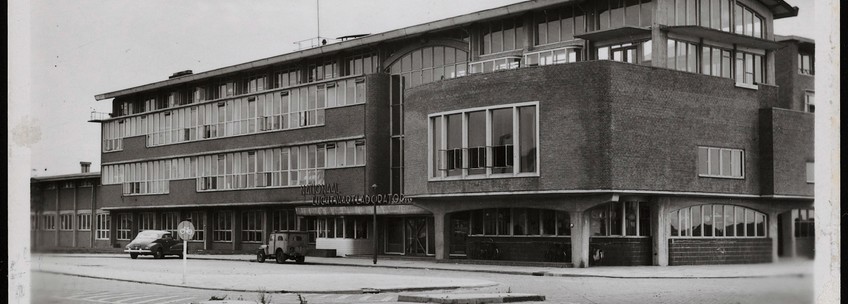Dutch Aerospace research focus during wartime - Webinar

During this lecture by Bram Elsenaar on aeronautical research for Nazi-Germany in The Netherlands, the most important facts of this period will be presented as a kind of case study for the role of aeronautical scientists during the war. It is left to the audience to reflect on lessons for our profession.
As soon as Hitler came into power in 1933, aeronautical research became a top-priority in Nazi-Germany. Many Research Institutes, like AVA (Aerodynamische Versuchsanstalt in Göttingen, founded by Prandtl), contributed to the expansion of the Nazi war capabilities. The close cooperation between industry, research institutes, academia and the organization of professionals will be outlined. Together they formed the network of people that delivered high tech developments like the jet-engine, swept-wing aircraft and the V-2 ballistic missile.
Only three days after the surrender of The Netherlands to Nazi-Germany, the premises of the Aeronautical Laboratory NLL at Amsterdam were 'secured' by representatives of the German Ministry of Aeronautics (Reichsluftfahrtministerium). Soon after that the leaders of two German Research Institutes came to Amsterdam to ask the directors of NLL whether the Laboratory was willing to perform contract work for AVA. The Secretary-General of the Dutch Department of Transport, the Board of the foundation NLL and the Directors of NLL all agreed that work for AVA could be done provided that it was restricted to 'basic research', without a contribution to the war effort. For a period of four years, between August 1940 and August 1944, up to half of the NLL budget was related to work under contract from AVA. In the presentation the work that was actually done will be discussed.
As a result of this work NLL expanded during the war from almost hundred employees in 1940 up till hundred and forty in 1944. At the same time the commercial director of NLL was actively involved in a resistance group till he was arrested in April 1944. He finally returned after the war from the concentration camp Sachsenhausen. Other employees of NLL were also involved in resistance activities, two of them did not survive the war.
The most important facts of this period will be presented as a kind of case study for the role of aeronautical scientists during the war. It is left to the audience to reflect on lessons for our profession.
About the Lecturer - Bram Elsenaar
Bram Elsenaar (1943) studied aeronautical engineering at Delft Technical University. In 1967 he finished his master thesis at the Dutch Aerospace Laboratory NLR with experimental work under supervision of Prof. S.F. Erdmann and Prof. J. Steketee. Subsequently he got a Masters Degree in Applied Sciences at the University of Toronto (UTIAS) in 1969.
After returning to The Netherlands, he worked at NLR on fundamental experimental research in aerodynamics. He coordinated the experimental work in the transonic windtunnels on the development of supercritical airfoils and wings, in close co-operation with Fokker. In 1990 he became head of the Department of Experimental Aerodynamics, responsible for all wind tunnel testing in the low speed, transonic and supersonic wind tunnels of NLR.
He was always attracted by European cooperation. Already as a student in Delft he was a member of Euroavia, the European Organization of Aeronautical Students. He was active in Eurovisc , GARTEUR and the AGARD Fluid Dynamics Panel. He was also involved in various European Framework Programmes on aerodynamic design and wake vortex research. Between 1999 and 2001 he worked at the AIRBUS Large Aircraft Division in Toulouse on behalf of STORK Fokker Aerostructures.
He retired in 2004. Soon after that he became active in the Heritage Foundation of NLR. He has a specific interest in the history of science and aerodynamic research in particular.
Recent publications:
- '0.2 - Ma - 4.0 - 50 years high speed windtunnel testing in The Netherlands'; Heritage Foundation NLR (2012)
- 'Het ontwerp van de Eiffel windtunnel van het RSL' in 'Windtunnels en windtunnelmetingen in vroegere tijden bij RSL en NLL' door Berend van den Berg; Heritage Foundation NLR (2013)
- 'Onder de vleugels van Göttingen - Het Nationaal Luchtvaartlaboratorium in de Tweede Wereldoorlog'; Uitgeverij Aspekt (2020)
Image: NLL, 1947 - Stadsarchief Amsterdam
Programma |
|
|---|---|
| - uur | Lecture by Bram Elsenaar |
| - uur | Discussion |
